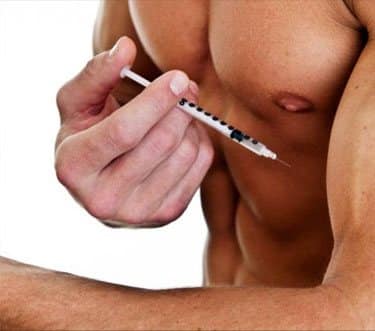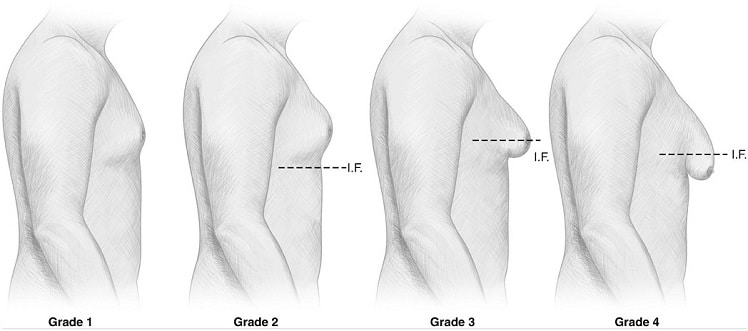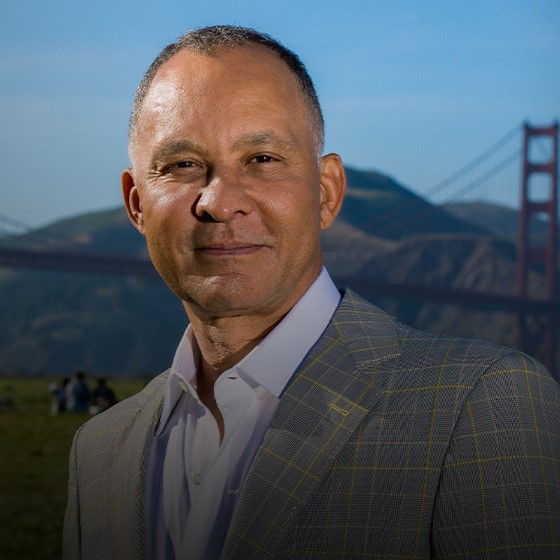Often referred to as man boobs, this medical condition is called gynecomastia by the medical community, and is usually caused by a hormonal imbalance. Research has shown that a high level of estrogen found in men is usually the cause of gynecomastia symptoms. Hormonal imbalance can happen for various reasons, including anabolic steroid use. The high associated risk that steroids cause gynecomastia is a huge concern in the bodybuilder community.
What Is Gynecomastia?
The medical term for man boobs is gynecomastia, which causes excess growth of breast glandular tissue in the male chest. Gynecomastia symptoms are often a combination of glandular tissue and fatty tissue. Another condition, pseudogynecomastia, is the growth of only fatty tissue in the chest area in overweight and older men. This is not true gynecomastia and is rarely experienced by men who are not overweight.
Women and men produce estrogen and testosterone. In women, the estrogen levels are higher than the testosterone levels, and in men, the testosterone levels are higher than the estrogen levels. This is why estrogen is often referred to as the female hormone and testosterone as the male hormone.
Causes of Gynecomastia
There are various known causes of gynecomastia symptoms, and it is crucial to have an accurate diagnosis. Dr. Miguel Delgado can diagnose gynecomastia with a physical examination and the gynecomastia pinch test. When there is no known cause of gynecomastia symptoms, blood tests may be requested, to check for any other underlying medical problems.
The Male Menopause or Andropause
Men between 50 and 60 years old will typically experience the male menopause or andropause. When this occurs, testosterone levels naturally start to decrease, which may cause glandular tissue growth. During the menopause, the body ratio of muscle to fat will normally change. Both of these developments can cause gynecomastia symptoms and man boobs.
Pubertal Gynecomastia
During puberty, estrogen levels are higher than testosterone levels, which often causes glandular tissue to grow and results in man boobs. This is likely to be more pronounced if an adolescent is overweight. Pubertal gynecomastia will usually resolve within two to three years, although occasionally, it will remain.
Cancer
- Breast cancer occurs in approximately 1% of men, and the causes are often unknown. However, steroid use can cause breast cancer.
- Prostate cancer usually occurs in men over 50 (the incidence is less than 1% in men below 50). Gynecomastia symptoms can be caused by hormone treatment for prostate cancer.
- Testicular cancer can cause an increase in estrogen, and in approximately 3% of diagnoses of testicular cancer, gynecomastia symptoms can develop.
- Cancer treatment — with research indicating a direct link between chemotherapy and gynecomastia symptoms.
Medical Conditions and Medications
- Heart (cardiovascular) disease and treatment with medications, such as digoxin (Lanoxin) and calcium channel blockers.
- Kidney failure — approximately 50% of men on dialysis for kidney failure develop gynecomastia symptoms.
- Liver failure, cirrhosis, and medications for cirrhosis.
- Hyperthyroidism and medications for hyperthyroidism may cause gynecomastia due to increased estrogen levels.
- HIV treatment — certain types of HIV medication may cause gynecomastia.
- Medications such as anti-anxiety medications, tricyclic antidepressants, antibiotics, and ulcer medications have been linked to gynecomastia symptoms.
Steroids and Gynecomastia
Bodybuilders can rarely achieve significant size using exercise, diet and weightlifting, to produce the muscle mass needed to compete professionally. This has led to a high incidence of anabolic steroids use in the professional bodybuilder community. Steroids help men increase muscle mass faster and induce larger muscles when combined with weightlifting.
Recognized by the world as one of the top professional bodybuilders, seven-time Mr. Olympia winner and four-time Mr. Universe winner Arnold Schwarzenegger admitted he used steroids when competing. Although at the time he was competing, steroids were legal, the lack of testing is still a controversial issue for many bodybuilders. The International Federation of Bodybuilding Professional League (IFBB) rules state that steroid use is not allowed, and all competitors are subject to IFBB random drug testing. Yet tests do not routinely take place. Even though steroids are now illegal in the US, it is generally accepted by the bodybuilding community that bodybuilders who want to compete in more challenging competitions, will take steroids.
Anabolic steroids cause gynecomastia by disrupting the endocrine system that regulates hormones, increasing the enzyme responsible for converting testosterone into estrogen. In many men, this leads to the growth of breast glandular tissue and man boobs. One of the main issues caused by anabolic steroid use is gynecomastia. In the bodybuilding community, gynecomastia symptoms are often referred to as “bitch tits” and are a real problem for many men. Even when steroids are no longer used, gynecomastia will not go away.
Gynecomastia Symptoms
The most obvious gynecomastia symptoms are the appearance of man boobs or moobs, which vary in size. The difference is defined by gynecomastia grades, a system adopted by the American Society of Plastic Surgeons.
There are five gynecomastia grades:
- Grade 1 gynecomastia symptoms refer to a slight increase of glandular tissue and often cause the appearance of puffy nipples.
- Grade 2 gynecomastia symptoms cause a more significant growth of glandular tissue, resulting in small man boobs and a more feminine appearance of the male chest.
- Grade 3 gynecomastia symptoms will produce feminine-looking breasts with a slight mammary (breast) crease.
- Grade 4 gynecomastia symptoms are the most severe and result in extremely feminine-looking breasts that are full and noticeable, with a significant drop and mammary crease.
Treatment for Gynecomastia
Treatments for gynecomastia fall into three types: natural supplements, medications, and gynecomastia surgery. Numerous companies sell a range of supplements they claim will inhibit estrogen production, which prevents and reduces gynecomastia. There is no scientific research to back up these claims, and supplements are not regulated by the Food and Drug Administration (FDA).
Treatment for Gynecomastia With Tamoxifen (Nolvadex® or Soltamox®)
Tamoxifen (Nolvadex® or Soltamox®) is widely used by bodybuilders to prevent and reverse gynecomastia. Research shows that men only experience a partial reduction of gynecomastia with tamoxifen, and the associated severe side effects of tamoxifen include stroke, vision impairment, and liver disease. To date, the FDA has not approved any medications for gynecomastia treatment.
Gynecomastia Surgery for Steroid Induced Gynecomastia
Gynecomastia surgery is the only guaranteed way to eliminate man boobs from steroid use. It is highly advisable that bodybuilders wait until they have stopped using steroids before having gynecomastia surgery. Otherwise, the symptoms are likely to return. Grade 1 and some grade 2 gynecomastia symptoms will usually require standard gynecomastia surgery, with gland excision to remove the excess breast tissue. This requires a small incison on the edge of the areola of around 2.5 to 3 cm. Once healed the scar will normally be well hidden by the change in skin color between the areola and chest skin. Another type of gynecomastai surgery that is often referred to as scarless gynecomastia surgery is the pull-through technique.
The pull-through technique is normally only suitable for grade 1 gynecomastia and only requires a small incision of around 5 to 10 mm cm in length, made at the edge of the periareolar, which means the scar will be almost invisible when it has healed.
Dr. Miguel Delgado performing the pull-through gynecomastia surgery technique
Grade 3 and grade 4 gynecomastia symptoms will generally require a double incision mastectomy or a two stage procedure. This is due to excess skin that needs to be removed for tight, masculine chest contours, as well as glandular and fatty tissue. Patient satisfaction for gynecomastia surgery is high, with research showing that 98% of bodybuilders receiving gynecomastia surgery are pleased with the results.
For personalized information about gynecomastia plastic surgery procedures, please complete Dr. Delgado’s inquiry form.
Miguel Delgado, M.D, F.A.C.S is a world-renowned Board-Certified Plastic Surgeon granted by the American Board of Plastic and Reconstructive Surgery and a member of the American Society of Plastic Surgery and Aesthetic Society. Dr. Delgado has a surgical practice solely dedicated to cosmetic plastic surgery. He specializes in gynecomastia surgery and is the medical director of Gynecomastia.org, the oldest and largest gynecomastia forum dedicated to supporting, educating, and providing solutions for men with breast enlargement. Dr. Delgado celebrates 30 years of practice in San Francisco, California. He was voted the “Best Plastic Surgeon of 2017-2021.”
Gynecomastia.org does not provide medical advice, treatment, or diagnosis.



